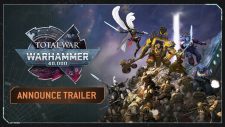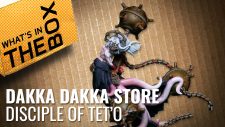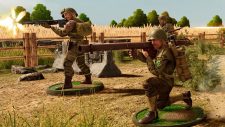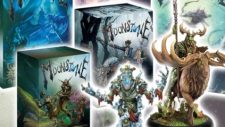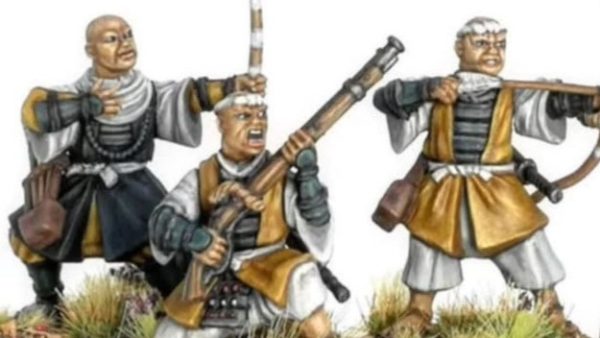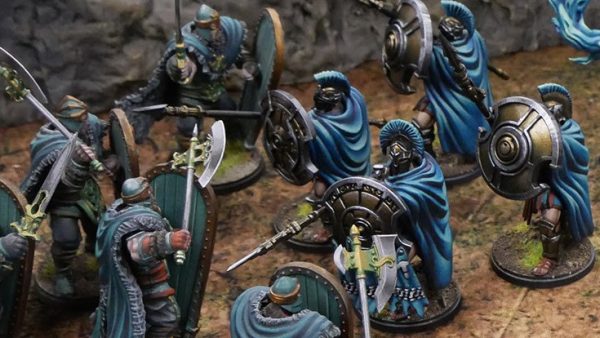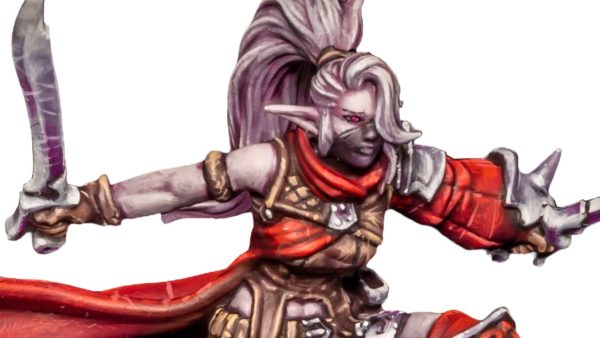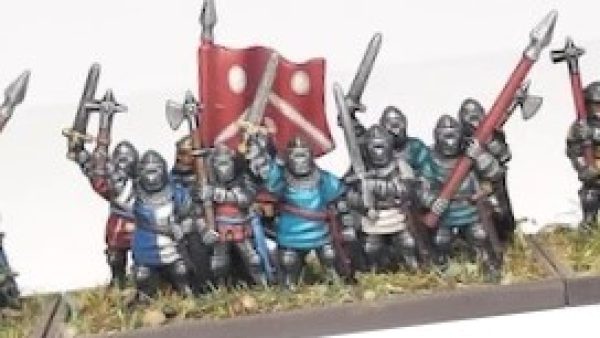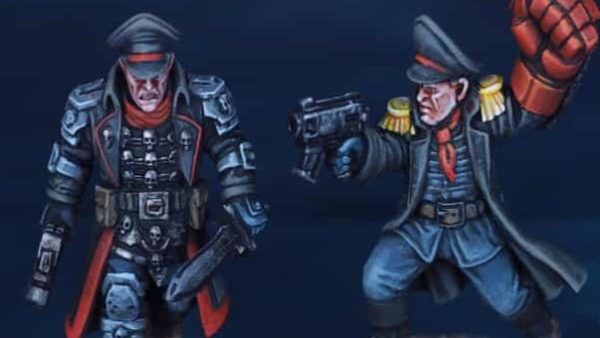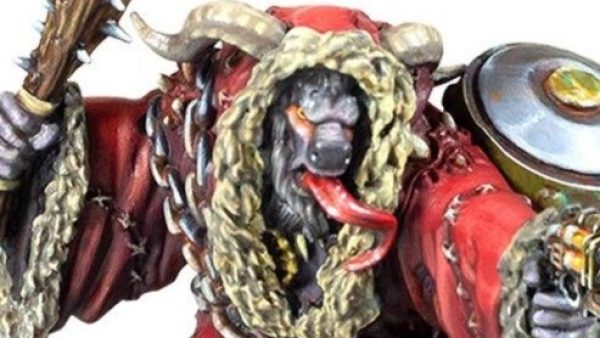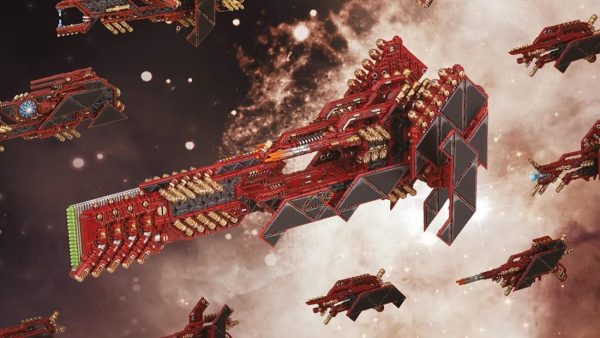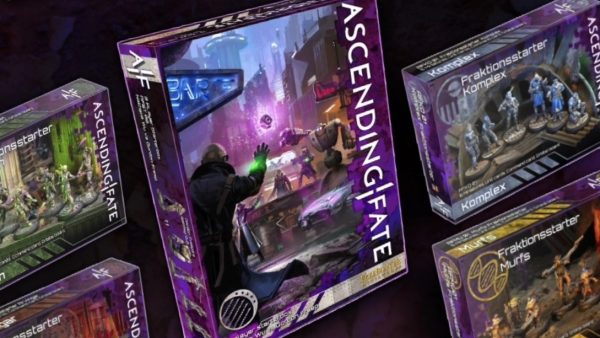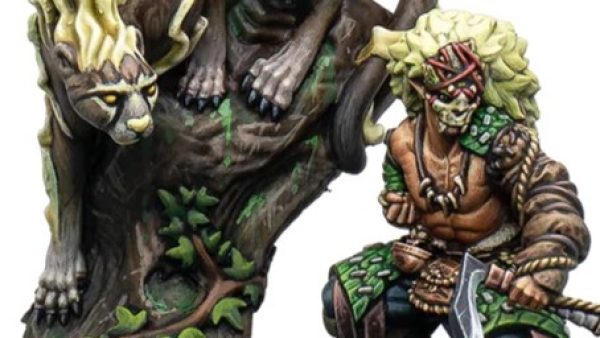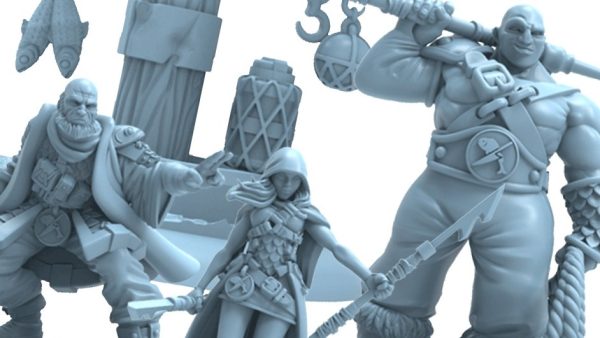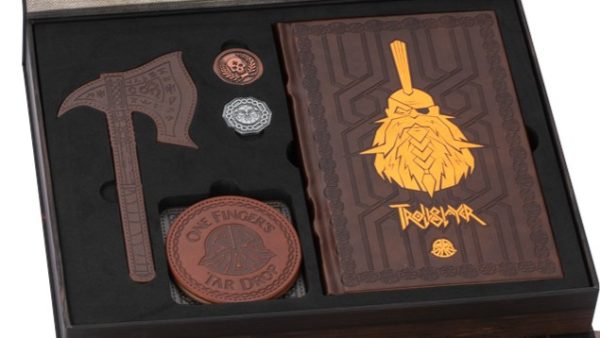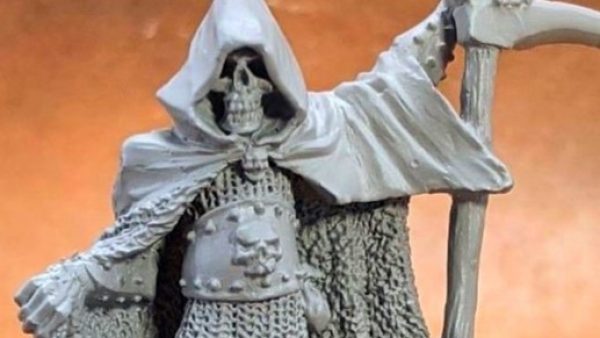
Returning to The Borderlands
Recommendations: 46
About the Project
This is a new campaign for the 3rd edition of "Five Leagues from The Borderlands" by Ivan Sorenson (published by Modiphius Entertainment). I had previously started a 2nd edition campaign during lockdown but due to a mixture of ill-health, family tragedy and the release of the new edition, I have decided to put the old campaign into mothballs and start afresh using the new rules. On the whole, I really like the new version - it certainly reads easier than the older ones. Although I do miss some of the previous features, I'll reserve judgement on playability until I have more games under my belt. For now, I'm in the campaign design and warband creation stages. I may also create a second, parallel project detailing what miniatures and scenery I paint/make to use in this campaign.
Related Game: Five Leagues from the Borderlands
Related Company: Modiphius Entertainment
Related Genre: Fantasy
This Project is Active
The Campaign – Setting The Stage
Each campaign region (or map in our case) is imperilled by one of three ‘threats’ – dangers that menace each area and prevent the locals from living their lives in peace and harmony.
The most endangered areas have ratings of 6, the lowest of 1, and areas that are clear of all threat are 0. In this campaign, the threat levels begin at 6, 5 and 5. Joy! Regardless of the level, all campaigns end in one of two ways – warband death or area clearing. Obviously, I’m hoping for the latter…
Again, no name tables are included in the core rules for the settlements or places of interest, but I have plenty of online help as well as some dedicated resource material to help me flesh things out when required. For now, the things I know about the region are shown on the campaign map and are detailed below.
The Region
The campaign map shows the Northern Borderlands of the Kingdom of Valondir, with details such as are known to our Heroes.
The Settlements
- Woodrest – A medium-sized market town.
- Crowfield – A scattered farming community with a population equivalent to that of a hamlet.
- Elhryst – Also known as “the Moot”, this nomadic, hamlet-sized campsite is almost exclusively comprised of traders and travelling clans.
Points of Interest
- Monolith Fells – This wild scrubland is dotted with blasted trees and towering stone henges. It is also rumoured to be infested with countless undead and restless souls that have managed to claw their way out of the Bleached Bone Wastes to the east. Many fear that these may still be under the sway of Balabarb, and that he is reforming his hosts to once more wage war upon the world.
- Bleached Bone Wastes – This desolate wasteland stands testament to the destructive violence unleashed when the armies of Ashitus, Lord of Law and Balabarb, the God of Death battled each other in what became known as “The War of The Damned”.
- Iron March Mountains – Famous for both its metal and mineral-rich rocks as well as the fierce Dusklings that call it their home. These mountains form a natural border to the lands and act as the main bastion of defence from the wild inhabitants beyond its frozen northern edges.
- Mount Nargunar – By far the largest mountain within the already impressive Iron March Mountains, Nargunar is the ancestral home of the Dusklings. Creatures of the shadows, rather than creatures of the sun, Dusklings are stalwart warriors who place great emphasis on individual glory. When not waging war, they are preparing for war and rumblings from their massive forge workings can be felt throughout the surrounding mountains.
- Blightfen Mire – This immense bog is the result of the runoff water from the Duskling forge-factories and mines buried deep within the Iron March Mountains. Many say it is beset by beings of foul evil, creatures so twisted by the tainted water and residual magical energies that only the mad or the truly desperate would choose to brave its depths.
- Barrowlands – A region of gently rolling hills, many of which contain the buried remains of a long-dead race of giants known simply as “the Elders”. Rumours and records both agree on two things – that these tombs are filled with rare treasures and wondrous items of lost knowledge, and equally, that none who have chosen to violate them have escaped without paying a heavy price for their wilful desecration.
Campaign goals
The aim of the campaign is to eliminate (reduce to zero) each of the threats in the regions. By then, I’ll have pacified the area and the campaign will end.
Or I’ll die trying…
“A life of exploring sounds like a nice change from all the blood and misery, actually.”
– Cer Ranold, exiled noble, overheard while talking to his friend and former mentor, Hurgon de Gris
Beginning the Campaign
This is where I’ll start detailing my Five Leagues play-through. I won’t go into the rules too much, partly because, like all rules, they can make dry reading, but mostly to try and maintain a sense of immersion. I will need to clarify or explain some things like choices and results, but overall, I’ll try to keep things narrative.
If anyone wants to ask anything, please feel free to chime in at any time. If anyone wants to play along, you can pick up your own copy of Five Leagues from the Borderlands from either DriveThruRPG or Modipius Entertainment. You can easily play using just dice, pencil and paper. Minis and scenery are optional – just use either graph paper or a battlemat and meeples, pogs, pawns, standees, 2D paper tokens pasted onto bits of card, whatever you happen to have to hand.
I will be detailing the stuff that needs to be done to get the games on the table over in a sister project, called imaginatively enough, “Returning to The Borderlands- Behind The Scenes”. You can find that here if you’re interested.
My Warband: The Fellowship of Exiles (aka. Ranold’s Company)
-
Cer Ranold – human male, Noble (Avatar)
-
Hurgon (the Grey) – human male, Zealot (Hero)
-
Bertolo – halfling male, Frontiersman (Hero)
-
Merlara – fey-blood female, Mystic (Hero)
-
Nedrik – human male, Brave Villager (Follower)
-
Tobin – human male, Hopeful Youth (Follower)
What does the game look and feel like?
At the core of the game is the warband: the counterpart to the classic adventuring party seen in role-playing games or novels like Lord of the Rings or mercenary units like The Black Company. Rather than playing a single character, as you might in a role-playing game, I’m in control of the entire warband.
In the campaign, I’ll travel between towns, villages and farmsteads, dealing with random encounters and events while trying to secure peace across the region.
The game is essentially encounter and combat-based, with decision-making and resource management touches. The focus of each turn in the campaign is a tabletop battle against an enemy group bracketed by pre-planning and aftereffect phases. How that battle comes about is determined both by my choices and previous events, coupled with a certain amount of randomness. The level of detail is left open for interpretation – enough so that you know what’s going on, but not so much as you feel railroaded into only one way things can be described. For instance, a lot of things/people are described in fairly generic terms, it’s then left up to you to describe them so that they fit into your narrative. You could, for instance, swap things around and rather than go medieval, you could play (and therefore describe things) as if you were a band of Ronin in feudal Japan, etc.
As I play, some of my characters will gain experience, skills, and equipment while others may be seriously hurt or even killed.
There isn’t a pre-determined end to the campaign, although the system does offer “adventuring milestones” where you could declare victory if you want to do so. I’ll just be using the default victory condition of ridding the land of the various ‘threats’ (more on that later) scattered throughout the main map regions. Once they’re all cleared, I’ll claim the borderlands as ‘safe’ and end the campaign.
The game is geared completely towards solo play, however, there is no reason why I couldn’t sit down to play with a friend (yes, I have them) – for example splitting the characters of a warband between us and playing together or having one player command the bad guys. It would also be possible to have one player act as GM while the others explore a decrepit ruin full of traps and cultists. They even offer up some tools and tricks to make it easier. I have played using all of these methods in the past and they are all great fun.
It’s a very ‘open’ system, and by that, I mean it’s open to interpretation. The author (Ivan) gives some basic (but detailed) information and then it’s up to you to flesh it out as much or as little as you want so that it fits into the narrative of the type of game you are looking for. Anyone looking for a system where it’s all laid out for you and all you need to do is roll dice on tables, etc. should look elsewhere, this isn’t the game for you. If, on the other hand, you like telling stories to go along with your dice rolling, Five Leagues could very well entertain you for quite a while.
The World of Five Leagues from the Borderland
The Five Leagues game system is not set in a specific setting, as much as in an atmosphere or theme. That theme is what I’d call “low fantasy” with a gritty, horror-tinged feel. While I could go off and develop a whole world for it (something that I’ve done for so many other games in the past), I’ve opted to deliberately leave it ‘woolly’ and vague so I can concentrate on the immediate environs where the action will be taking place.
So, imagine a world that looks much like the one our ancestors inhabited – a world of feudal hierarchies, with priests and knights and commoners and merchants and all the other icons of medieval existence.
It’s a world where life can be short and grim. Warfare between feuding nobility, bandit raids, rampaging mercenaries and foreign raiders present several threats to life and limb. Now, those threats are, at the very least, understandable. They are something a man or woman can face in the daylight. However, when the evening fog creeps over the land, when clouds obscure the moon, when the shadows in the woods seem to move of their own accord, that’s when the peasants huddle together and the rich stay indoors.
Things lurk in the shadows. Monstrosities that should not live. Things from beyond our realms. Conspirators and heretics scheme, while beasts prowl.
If such things can lurk under the very noses of the mighty and the holy, what chance do normal folk stand? Can sword, torch and faith drive back the darkness, or will the shadows envelop all?
The campaign will focus on what we might term “recognizable” fantasy. A world where a band of heroes can exist but will contend with problems that seem realistic and plausible to us – bandit gangs, border raids and mad-eyed heretics.
As the campaign develops more, the night will get darker, and the shadows will get deeper.
The Campaign Map - The Northern Borderlands of the Kingdom of Valondir
Having generated the basics of the campaign (number/type of settlements, threats to the area and some places of interest, etc.), it was time to create a basic map on which to play out the campaign. For this, I went with Inkarnate. It’s free and relatively easy to use. I could have gone with Wonderdraft, but I really just wanted fast over features.
Once the map was done, I imported it into World Anvil and started adding some extra touches that should hopefully help by giving visual interest as well as offering detailed information without too much clutter. It also means that I can constantly update the map as things change during the course of play.
I’m not entirely sure how to show the map here as the fully interactive version exists on World Anvil’s website and I think the best I can do is offer a link to it whenever anything has changed. For now then, here is a screen grab of the map as it stands just prior to the start of Turn 1.
































